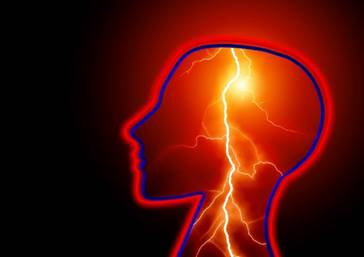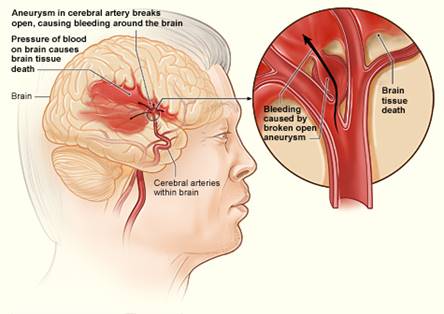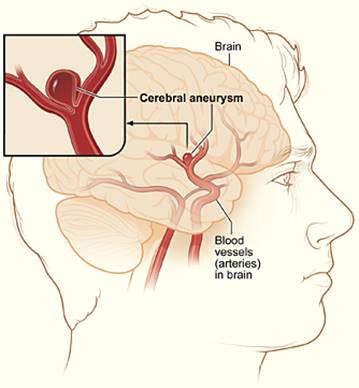4.19.2 Lesson: Stroke
- Due No due date
- Points 100
- Questions 5
- Time Limit None
- Allowed Attempts Unlimited
Instructions
STROKE

Objectives:
G.2 – Students will analyze personal risk factors for diabetes, heart disease, and stroke.
G.5 – Students will identify health-related decisions that contribute to heart disease, stroke, diabetes, and other chronic diseases and conditions.
STROKE
A stroke occurs if the flow of oxygen-rich blood to a portion of the brain is blocked. Without oxygen, brain cells start to die after a few minutes. Sudden bleeding in the brain also can cause a stroke if it damages brain cells.
If brain cells die or are damaged because of a stroke, symptoms occur in the parts of the body that these brain cells control. Examples of stroke symptoms include sudden weakness; paralysis or numbness of the face, arms, or legs (paralysis is an inability to move); trouble speaking or understanding speech; and trouble seeing.
A stroke is a serious medical condition that requires emergency care. A stroke can cause lasting brain damage, long-term disability, or even death. Stroke is a leading cause of death in the United States.
Types of Stroke
The two main types of stroke are ischemic (is-KE-mik) and hemorrhagic (hem-ah-RAJ-ik). Ischemic is the more common type of stroke.
Ischemic Stroke
An ischemic stroke occurs if an artery that supplies oxygen-rich blood to the brain becomes blocked. Blood clots often cause the blockages that lead to ischemic strokes.
About 85 percent of strokes are ischemic strokes. Ischemic strokes occur when the arteries to your brain become narrowed or blocked, causing severely reduced blood flow (ischemia). The most common ischemic strokes include:
- Thrombotic stroke. A thrombotic stroke occurs when a blood clot (thrombus) forms in one of the arteries that supply blood to your brain. A clot may be caused by fatty deposits (plaque) that build up in arteries and cause reduced blood flow (atherosclerosis) or other artery conditions.
- Embolic stroke. An embolic stroke occurs when a blood clot or other debris forms away from your brain — commonly in your heart — and is swept through your bloodstream to lodge in narrower brain arteries. This type of blood clot is called an embolus.
Hemorrhagic Stroke
A hemorrhagic stroke occurs if an artery in the brain leaks blood or ruptures (breaks open). The pressure from the leaked blood damages brain cells. High blood pressure and aneurysms (AN-u-risms) are examples of conditions that can cause hemorrhagic strokes. (Aneurysms are balloon-like bulges in an artery that can stretch and burst.)

Hemorrhagic stroke occurs when a blood vessel in your brain leaks or ruptures. Brain hemorrhages can result from many conditions that affect your blood vessels, including uncontrolled high blood pressure (hypertension), overtreatment with anticoagulants and weak spots in your blood vessel walls (aneurysms).
A less common cause of hemorrhage is the rupture of an abnormal tangle of thin-walled blood vessels (arteriovenous malformation) present at birth. Types of hemorrhagic stroke include:
- Intracerebral hemorrhage. In an intracerebral hemorrhage, a blood vessel in the brain bursts and spills into the surrounding brain tissue, damaging brain cells. Brain cells beyond the leak are deprived of blood and also damaged.
- High blood pressure, trauma, vascular malformations, use of blood-thinning medications, and other conditions may cause an intracerebral hemorrhage.
- Subarachnoid hemorrhage. In a subarachnoid hemorrhage, an artery on or near the surface of your brain bursts and spills into the space between the surface of your brain and your skull. This bleeding is often signaled by a sudden, severe headache.

A subarachnoid hemorrhage is commonly caused by the bursting of a small sack-shaped or berry-shaped outpouching on an artery known as an aneurysm. After the hemorrhage, the blood vessels in your brain may widen and narrow erratically (vasospasm), causing brain cell damage by further limiting blood flow.
Transient Ischemic Attack (TIA)
Another condition that is similar to a stroke is a transient ischemic attack, also called a TIA or “mini-stroke.” A TIA occurs if blood flow to a portion of the brain is blocked only for a short time. Thus, damage to the brain cells isn’t permanent (lasting). Like ischemic strokes, TIAs often are caused by blood clots. Although TIAs are not full-blown strokes, they greatly increase the risk of having a stroke. If you have a TIA, it’s important for your doctor to find the cause so you can take steps to prevent a stroke.
Both strokes and TIAs require emergency care.
Symptoms of Stroke
The following are symptoms of a stroke:
- Sudden weakness or numbness of the face, arm, or leg on one side of your body
- Sudden dimness or loss of vision, particularly in one eye
- Trouble talking or understanding what others are saying
- Sudden severe headache with no known cause
- Sudden unexplained dizziness
- Falling or unstable walking
One way to tell if someone might be having a stroke is the F.A.S.T. test.
- F is for Face drooping. Does one side of the face droop when the person tries to smile?
- A is for Arm weakness. When the person raises both arms, does one arm drift downward?
- S is for Speech difficulty. Can the person repeat a simple sentence (for example, “The sky is blue.”) correctly? Is his or her speech slurred?
- T is for Time to call for emergency help. It is important to get help immediately if a person has any of these symptoms.
Another warning sign of a stroke is called a transient ischemic attack (TIA). A TIA is a “mini-stroke” that can cause the symptoms listed above. It may only last a few minutes, but you should not ignore it. People who have a TIA are at greater risk of having a stroke later.
Risk Factors
There are several risk factors for stroke. Some risk factors for stroke can be changed, treated, or controlled. High blood pressure is the biggest risk factor for stroke that you can control. Others include the following:
Your risk of having a stroke is higher if you:
- Smoke or are exposed to secondhand smoke
- Are overweight or obese
- Are a heavy or binge drinker (of alcoholic beverages)
- Use illicit drugs such as cocaine and methamphetamines
- Have high cholesterol level
- Have uncontrolled diabetes
- Have high blood pressure - The risk of stroke begins to increase at blood pressure readings higher than 120/80 millimeters of mercury (mm Hg).
- Have obstructive sleep apnea - a sleep disorder in which the oxygen level intermittently drops during the night
- Have cardiovascular disease, including heart failure, heart defects, heart infection, or abnormal heart rhythm
- Are older than 55 years
- Have a family history of stroke, heart attack, or transient ischemic attack
- Are black
- Are female
- Have had a previous stroke or transient ischemic attack.
Prevention
There are several ways you can reduce your risk of having a stroke (or another stroke), and those ways include the following:
- If you are a smoker, stop smoking
- Reduce the amount of alcohol you drink
- Control your blood pressure
- Control your cholesterol levels
- If you have diabetes, control your blood sugar level
- Get regular physical activity
- Maintain a healthy weight
You should also have regular check-ups so that your doctor can help you manage health conditions that increase your risk of having a stroke (for example, high blood pressure).
As you did for yesterday’s assignment, today you will need to identify and list your risk factors for stroke. Take some time to study those risk factors and learn what yours are.
